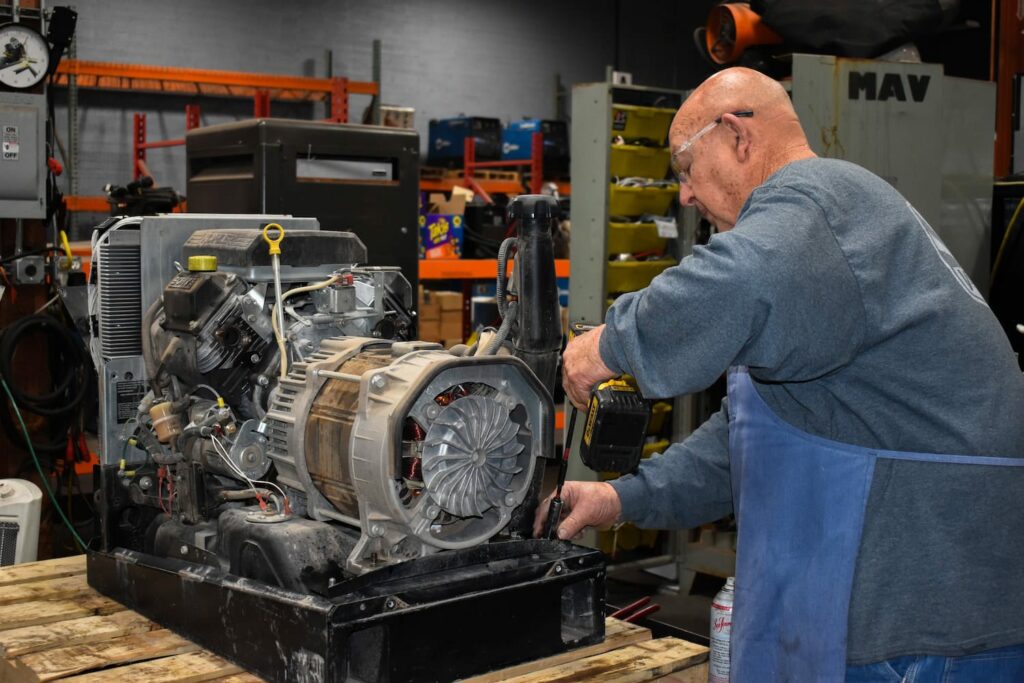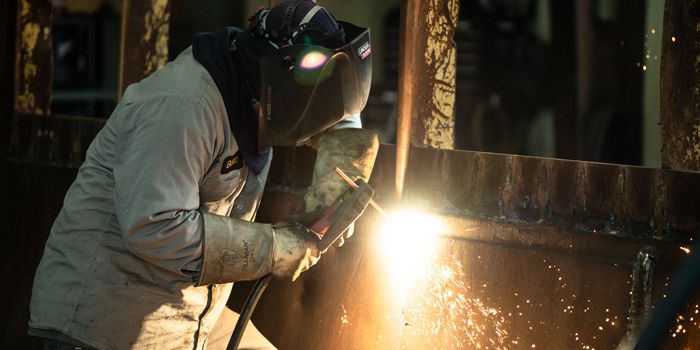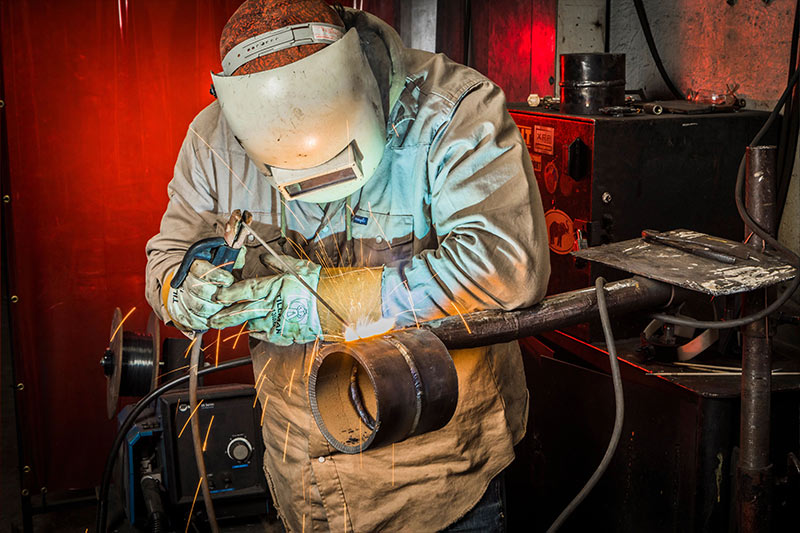Typical Welding Repair Service Issues and Just How to Address Them Effectively
Welding repair services frequently come across a series of concerns that can endanger the integrity of the final product. Typical issues include insufficient penetration, porosity, and misalignment, to name a few. Each problem presents special challenges that need details techniques for resolution. Understanding these issues is crucial for welders intending to improve their skills and results. This discussion will certainly discover these typical welding fixing problems and efficient approaches to resolve them.
Insufficient Infiltration
Inadequate penetration happens when the weld steel stops working to completely fuse with the base product, causing weak joints and potential structural failures. This concern usually stems from insufficient warm input, wrong electrode angle, or incorrect welding speed. Welders may run into insufficient infiltration because of a miscalculation of the required specifications for a details product density or kind. In addition, contamination on the base product's surface can impede reliable bonding, intensifying the problem. To attend to inadequate penetration, welders ought to guarantee suitable setups on their devices and maintain a tidy job surface area. Normal examination of welds is recommended to recognize any kind of shortages early, enabling for timely modifications and the avoidance of endangered structural stability in bonded assemblies.
Porosity
Porosity is a typical problem in bonded joints that manifests as little gas bubbles entraped within the weld metal. This problem can compromise the honesty of the weld, leading to reduced toughness and possible failure under stress. Belgrade Fabrication. Porosity normally occurs from contamination, moisture, or incorrect welding strategies, which allow gases to run away into the liquified weld pool. To address porosity, welders must assure proper surface area prep work, maintain a clean workplace, and make use of suitable welding criteria. In addition, choosing the best filler material and securing gas can minimize gas entrapment. Regular examination and testing of welds can aid recognize porosity early, assuring prompt corrective actions are taken, thus preserving the high quality and integrity of the welded framework
Misalignment
Imbalance in welding can occur from different factors, consisting of improper arrangement and thermal expansion. Recognizing the source is important for reliable resolution. Several improvement techniques are readily available to realign elements and guarantee architectural integrity.
Causes of Misalignment
Welding misalignment commonly originates from a range of underlying problems that can compromise structural stability. One main cause is incorrect fit-up of parts prior to welding, which can bring about gaps and irregular surfaces. Variations in thermal expansion throughout the welding procedure can additionally result in distortion, particularly if the materials being joined have various coefficients of expansion. Additionally, insufficient fixturing and securing might fall short to hold elements safely in position, resulting in movement during welding. Badly maintained devices, consisting of welding devices and tools, may present disparities in the weld bead, more contributing to misalignment. Driver mistake, stemming from insufficient training or experience, can likewise play a substantial role in producing misaligned welds.

Modification Strategies Readily Available
Attending to imbalance effectively requires a mix of rehabilitative techniques tailored to the details problems at hand. One common technique is the use of jigs or components to hold parts in the appropriate placement throughout welding, guaranteeing consistent alignment. Additionally, preheating the materials can help in reducing distortion and boost fit-up. For significant imbalance, mechanical realignment methods, such as making use of hydraulic jacks or clamps, can be utilized to deal with the position before welding. Post-weld warmth treatment might additionally be essential to soothe tensions created by misalignment. Finally, mindful inspection and modification during the setup stage can prevent imbalance concerns from becoming significant problems, promoting a smoother welding procedure and boosting overall structural honesty.
Distortion
Distortion is a common difficulty in welding that can emerge from various elements, consisting of uneven cooling and heating. Comprehending the sources of distortion is essential for carrying out effective prevention methods. Addressing this concern not only boosts architectural integrity but also improves the total top quality of the weld.
Reasons for Distortion
When subjected to the extreme heat of welding, materials typically undergo adjustments that can bring about distortion. This phenomenon largely arises from thermal growth and tightening during the welding procedure. As the weld location heats up, the product increases; upon cooling, it gets, which can develop internal anxieties. Furthermore, uneven home heating throughout a workpiece can intensify these tensions, causing bending or bending. The kind of product likewise plays a substantial duty; metals with differing thermal conductivity and coefficients of development may react differently, bring about unpredictable distortions. Bad joint style and poor fixturing can add to misalignment throughout welding, raising the chance of distortion. Recognizing these reasons is important for efficient welding repair service and prevention approaches.
Avoidance Techniques
Reliable avoidance strategies check here for distortion during welding emphasis on controlling warmth input and making certain correct joint layout. Maintaining a consistent warm input helps to reduce thermal expansion and tightening, which can bring about distortion. Using techniques such as preheating the work surface can also reduce the temperature slope, advertising uniform home heating. Furthermore, picking proper joint designs, such as T-joints or lap joints, can enhance security and reduce tension focus. Executing correct fixturing to protect the workpieces in area even more aids in keeping placement throughout the welding procedure. Lastly, staggered welding sequences can distribute warm more evenly, stopping local distortion. By using these methods, welders can considerably decrease the likelihood of distortion and boost the overall quality of their welds.
Cracking
Breaking is a typical concern come across in welding repair services, often resulting from various elements such as improper air conditioning prices, product choice, or inadequate joint preparation. The event of fractures can considerably compromise the integrity of the weld, leading to possible failings throughout procedure. To resolve this concern, welders should initially assess the source, making sure that materials are suitable and suitably chosen for the particular application. Additionally, regulating the cooling price during the welding procedure is necessary; quick cooling can generate stress and anxiety and bring about splitting. Proper joint style and preparation additionally add to reducing the threat. Executing these strategies can improve weld top quality and longevity, inevitably minimizing the likelihood of cracking in ended up weldments.

Incomplete Fusion
A substantial issue in welding repair services is insufficient blend, which occurs when the weld steel does not appropriately bond with the base material or previous weld passes - Montana Mobile Welding and Repair. This issue can result in weak points in the joint, possibly compromising the honesty of the welded framework. Factors contributing to insufficient fusion consist of insufficient warmth input, inappropriate welding method, and contamination of the surfaces being joined. To address this issue efficiently, welders need to assure correct pre-weld cleaning and surface preparation, as well as readjust their welding specifications to attain adequate penetration and combination. Routine examination throughout the welding process can additionally assist recognize incomplete fusion early, allowing for prompt rehabilitative procedures to improve the total high quality of the weld
Overheating
While welding repair services can improve architectural honesty, overheating provides a considerable difficulty that can lead to material deterioration. Too much warm during welding can modify the mechanical residential properties of metals, resulting in lowered stamina, raised brittleness, and bending. This phenomenon is specifically critical in high-stress applications where structural integrity is extremely important. Determining getting too hot can involve visual examinations for discoloration or distortion, in addition to keeping track of temperature level during the welding procedure. To reduce the threats related to overheating, welders must employ proper strategies, such as controlling warmth input, readjusting traveling speed, and using appropriate filler materials. Furthermore, implementing pre- and post-weld warm treatments can aid restore product residential or commercial properties and boost the general high quality of the fixing, guaranteeing lasting efficiency and security.
Regularly Asked Inquiries
What Are the Typical Indicators of a Welding Defect?

Exactly How Can I Evaluate My Welds for Quality?
To check welds for quality, one can utilize aesthetic assessments, ultrasonic screening, and radiographic approaches. Each technique guarantees structural honesty, determines defects, and verifies adherence to defined requirements, inevitably improving the integrity of the bonded joints.
What Safety Preventative Measures Should I Take While Welding?
When welding, one should prioritize safety by wearing ideal personal safety tools, guaranteeing proper ventilation, safeguarding flammable products away, maintaining a clean office, and being aware of surroundings to stop crashes and injuries.
Can I Repair a Weld Without Redoing the Entire Joint?
Fixing a weld without redoing the entire joint is possible, depending upon the damages (Belgrade Welding). Strategies such as grinding, adding filler product, or using a welding procedure can efficiently attend to certain problems while protecting the surrounding structure
What Tools Are Necessary for Efficient Welding Services?
Necessary devices for reliable welding repairs include a welding device, cord brush, mill, protective equipment, clamps, and filler products. Each device plays a vital duty in guaranteeing high quality and safety during the repair work process. Porosity generally occurs from contamination, wetness, or improper welding strategies, which enable gases to escape right into the molten weld swimming pool. Inadequately conserved devices, including welding equipments and tools, may introduce incongruities in the weld bead, more contributing to imbalance. When subjected to the intense warmth of welding, materials typically undergo modifications that can lead to distortion. Cracking is a typical concern experienced in welding repairs, often resulting from different variables such as inappropriate cooling prices, product option, or poor joint preparation. A significant problem in welding repair work is incomplete blend, which happens when the weld steel does not properly bond with the base product or previous weld passes.